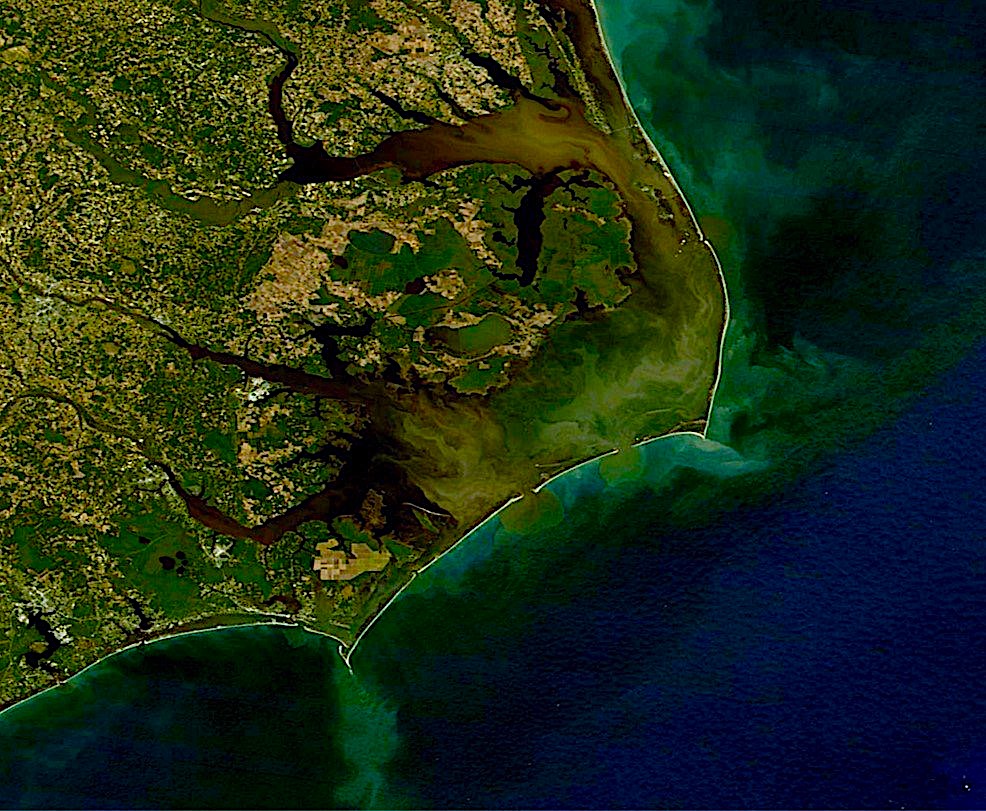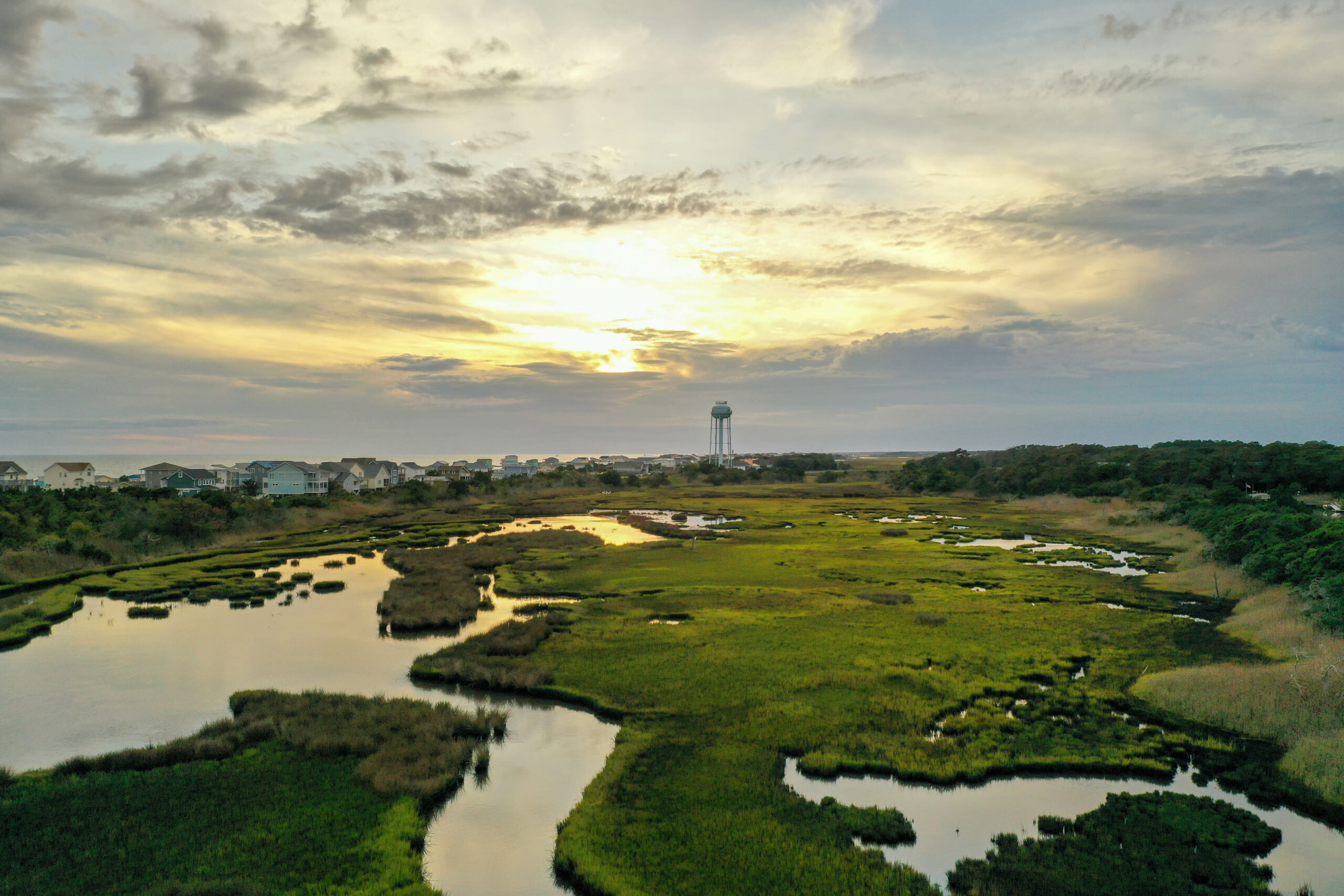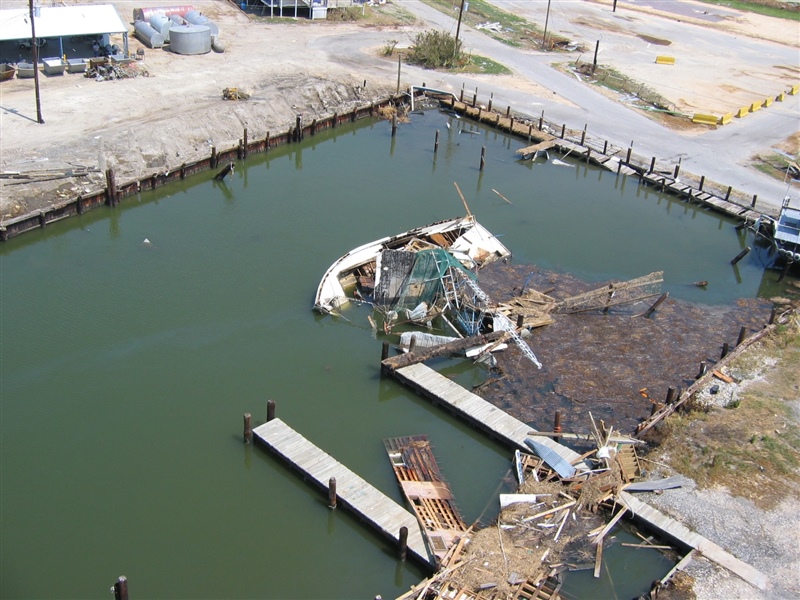As the long, lazy days of summer come to a close for most of us, many North Carolina Sea Grant researchers are already busy with cutting edge research — recently, Sea Grant awarded more than $630,000 in competitive grants as part of its two-year funding cycle. The projects receiving funding address key issues identified in Sea Grant’s strategic plan.
For more than 30 years, Sea Grant has emphasized solid, peer-reviewed scientific research that can be applied to the real-world problems and issues facing North Carolina’s coast, says Steve Rebach,associate director of North Carolina Sea Grant.
“Sea Grant’s research not only enhances the sustainable use and conservation of ocean and coastal resources, but also benefits communities and economies,” he adds.
AQUACULTURE
Among new aquaculture projects, researchers will examine pressing questions about hybrid striped bass, one of the state’s most commercially valuable aquaculture species.
Researchers Russell Borski and Craig Sullivan of North Carolina State University will use new methods to study the hybrid striped bass genome, as well as the organism’s structure and function of proteins.
“We expect to identify key genes and proteins whose expression are diminished during suboptimal growth or dysfunctional maturation, but are enhanced in high-performance fish,” says Borski.
Such a discovery will help researchers pinpoint reasons why certain individual fish grow more quickly than others. It also will help researchers identify biomarkers that distinguish these individuals and their families of fish for breeding. Finally, the Daniels and his team expect their findings will shed light on the optimal conditions for hybrid striped bass growth and reproduction.
“These developments will allow us to solve problems with breeding and growth of hybrid striped bass, enabling further expansion of hybrid striped bass farming in North Carolina and across the nation,” Borski says.
In addition to hybrid striped bass, Borski is researching southern flounder with Wade Wantanabe of University of North Carolina at Wilmington (UNCW) and Harry Daniels, John Godwin and Thomas Losordo of NC State. The team has developed technology for growing out southern flounder in recirculating systems, and it is ready to be put in action. They plan to work with
“Based on our past and current Sea Grant-funded projects, we are confident that we have reached the point where growout technology can be successfully transferred to the aquaculture industry and establish southern flounder farming as a viable aquaculture activity in the United States,” says Daniels, the principal investigator for the project.
Despite these successes, controlling differences in growth between males and females remains a challenge. Because female flounder grow two to three times faster than males, controlling sex ratios can have significant effects on harvest size and production economics, Daniels explains.
Female flounder are able to reverse their sex based on growing conditions, and previous research indicates that high or low temperatures in tanks can cause a population to become predominantly male.
Daniels and his team will study other factors related to sex reversal, such as stocking densities and light exposure. They hope to refine and transfer biotechnologies to produce all-female fingerlings, thus reducing unwanted reproduction and eliminating male stock that would not reach market size.
“The development of southern flounder culture would be a significant contribution to the U.S. aquaculture industry through the introduction of a high-value product that can be readily marketed worldwide,” says Daniels.
Additional Aquaculture Projects
Molecular Mechanism Controlling Dermo Proliferation and Spread in Crassostrea virginica: Parasite-Induced Inhibition of Apopstosis as a Target for Anti-Parasite Therapy. Francis Hughes Jr. and Inna Sogolova, University of North Carolina at Charlotte.
FISHERIES
Fisheries are in a constant stage of flux in North Carolina, especially the eastern oyster, a species suffering long-term decline due to over-harvesting, habitat destruction, pollution and disease. However, restoration efforts are strong in North Carolina. During the last five years, the N.C. Division of Marine Fisheries (DMF) has built several oyster reefs in Pamlico Sound as spawning sanctuaries.
NC State researchers Cynthia Cudaback, Dave Eggleston and Lian Xie will study how the physical circulation in Pamlico Sound affects dispersal patterns of oyster larvae. Using computerized models, the researchers have already made some projections about the most productive reefs and the extent of their larval distribution. The team will spend the next two years testing their predictions in the field.
“The big question is what is the best reef or set of reefs to conserve or build?” says Eggleston. “The project will give DMF some guidance on where they should place their restoration efforts.”
Additional Fisheries Projects
Effects of Hypoxia-Induced Habitat Compression on Juvenile Fish Cohort Dynamics: Field and Model Investigations. James Ricke and J. Kevin Craig of NC State.
Factors Influencing Escapement of Red Drum in North Carolina: A Combined Conventional Tag and Telemetry Approach. Jeffery Buckel, Joseph Hightower and Kenneth Pollock of NC State.
Hypoxia Impacts on Sustainable Oyster Populations. Amy Ringwood of UNC-Charlotte, James Oliver of NC State and Patricia McClellan-Green of UNC-Charlotte.
COASTAL COMMUNITIES
With resident and tourist populations on the rise in North Carolina, the landscapes of coastal and estuarine counties are undergoing dramatic change. To better understand such change, researchers Thomas Crawford, Don Bradley and Bob Edwards of East Carolina University plan to conduct a spatial characterization of changing land-use patterns in 20 North Carolina counties subject to the Coastal Area Management Act (CAMA).
First the researchers will analyze satellite and field data sets from the United States Geological Survey and NOAA’s Coastal Change Analysis Program. Then they will examine how the changes in the landscape relate to increased population growth and the migration of certain populations, such retirees or commuters from larger metropolitan areas.
“The landscape data we will use are some of the best available to look at some of these broad changes in the last ten years or so,” Crawford says. “We’d like to get these trends, patterns and results to the people who can most use them.”
The team plans to produce both a report and a CD or DVD containing GIS data for use by a variety of local, state and federal planning officials, as well as conservation groups and citizens.
Additional Communities Projects
Using LIDAR to Monitor Topographic Changes on Barrier Island Systems. Paul Gares and Yong Wang of ECU.
ECOSYSTEMS AND HABITATS
As increased urbanization and changing agricultural patterns continue in North Carolina’s coastal zones, higher levels of nutrients — such as nitrogen and phosphorous — are making their way into marine and estuarine systems. Overloading nutrients in estuarine systems can trigger algal blooms that alter the food web structure and create larger areas of hypoxia, says Craig Tobias, a geology researcher at UNCW.
More freshwater also is being removed from upstream, mainly due to rapid development. Increased withdrawals of freshwater upstream can push the boundary between saltwater and freshwater landward, potentially changing microbial nitrogen cycles in estuaries — notably how much nitrogen is removed versus how much is recycled.
Tobias and environmental scientist Bongkeun Song of UNCW will examine microbial nitrogen cycles in the Cape Fear River Estuary in an effort to quantify how the balance among these cycles changes in response to a shifting salinity gradient. Located near a fast-growing urban center, the Cape Fear River Estuary is subject to both nutrient loading and freshwater withdrawal.
“A better understanding of the factors that control the balance between nitrogen recycling versus nitrogen removal pathways is critical for a full examination of how estuaries currently function, and how they might respond to future perturbations,” the researchers note in their proposal.
Further north, increasing development is taking its toll on another important estuarine system — the Neuse River Estuary (NRE), a tributary to Pamlico Sound and a key nursery for the state’s fisheries. Prior Sea Grant research shows that a steady increase in agricultural, urban and industrial development, coupled with several hurricanes and two major droughts during the last decade, has affected primary production, carbon flux, nutrient cycling and food web dynamics in the NRE.
To combat the harmful effects of nutrient loading — such as algal blooms, hypoxia and fish kills — a nutrient-reduction strategy has been put in place for the NRE. Researcher Hans Paerl, from the University of North Carolina at Chapel Hill Institute of Marine Sciences in Morehead City, plans to assess the results and benefits of this strategy while also looking at climactic change in the mid-Atlantic region.
“This project will provide information vital to understanding food-web ramifications of long-term nutrient management for the Neuse River Estuary and other estuaries influenced by anthropogenic nutrient enrichment and climatic change,” says Paerl, who will collaborate with Richard Luettich and J. Christopher Taylor of NC State.
The team plans to examine how changes in nutrient supply and hydrology alter food web structure through changes in the phytoplankton community. Paerl also will look at how reduced oxygen and changes in the phytoplankton community affect grazing zooplankton.
Paerl says the information the project generates will be used to develop indicators for water quality. Such indicators can help fisheries managers responsible for evaluating nutrient management strategies for the NRE and other mid-Atlantic estuaries.
Additional Ecosystems Projects
Incorporating Humans in Ecosystem-Based Models of Fishery Management. Jeffery Johnson, Joseph Luczkovich, Lisa Clough and David Griffith of ECU.
Success in Oyster Reef Restoration: Population and Ecosystem Measures. Martin Posey and Troy Alphin of UNCW.
SEAFOOD SCIENCE & TECHNOLOGY
With increased demand for healthy meals and competition from imports, the seafood industry in North Carolina must continue to diversify to stay competitive. Sea Grant researchers are on the forefront of developing new ingredients and processing technologies.
Because the availability of certain whitefish species used to make surimi — water-washed, minced fish flesh processed into a variety of foods — have become limited, processors need to improve the amount of raw protein, or fish meat, to make the most of the resource.
For years, the conventional was process during surimi production recovered only 60 to 70 percent of “functional” protein, or protein that would gel when heated and give texture to processed seafood. Recently, Tyre Lanier of NC State altered the conventional surimi production process to recover close to 90 percent of functional protein.
Lanier’s latest project will focus on exacting better control of the process at a biochemical level. For the project, Lanier will extract proteins from surimi and inject them into fish fillets. He aims to understand how the proteins change shape and pick up water in response to different heating conditions. Understanding how these proteins change will help industry leaders adjust their process parameters to retain the maximum amount of moisture in a fillet, thus improving its flavor and texture.
Refining the process could boost the profitability of surimi-based products, as well as decrease fishing pressure on higher value species used for surimi, such as Alaskan pollock.
“Additionally, the new marinade injection application could open new markets for North Carolina fish species, such as menhaden, particularly in Asian and developing countries where stronger fish flavor is desired in fillet productions,” Lanier notes.
OTHER SEA GRANT EFFORTS
Sea Grant also sponsors a variety of other research efforts. University researchers in North Carolina may apply for minigrants, often used as “seed funds” to test a theory before suggesting a major project.
In addition, North Carolina Sea Grant encourages researchers to apply for various competitions run by the National Sea Grant College Program on topics such as oyster disease and invasive species.
The National Marine Fisheries Service has asked North Carolina Sea Grant twice to administer competitions for research efforts to reduce interactions between marine mammals and fishing gear.
And the N.C. General Assembly funds two programs administered by Sea Grant: the N.C. Fishery Resource Grant Program and the N.C. Blue Crab Research Program.
“We are proud to provide such a diverse array of research opportunities,” says Michael Voiland, North Carolina Sea Grant’s executive director.
This article was published in the Autumn 2006 issue of Coastwatch.
For contact information and reprint requests, visit ncseagrant.ncsu.edu/coastwatch/contact/.



